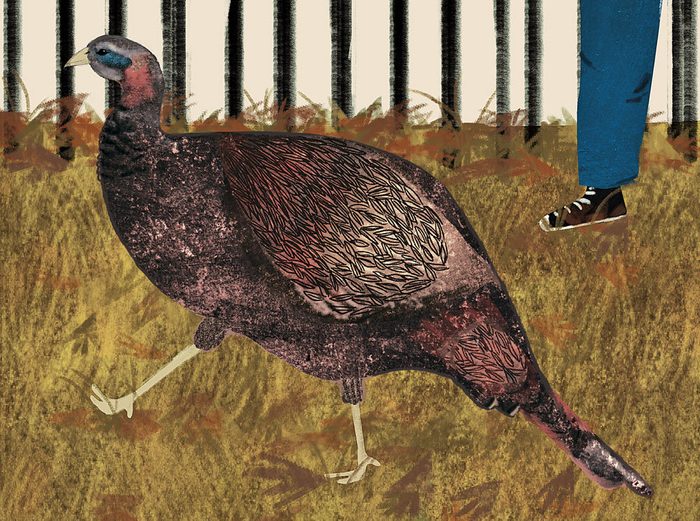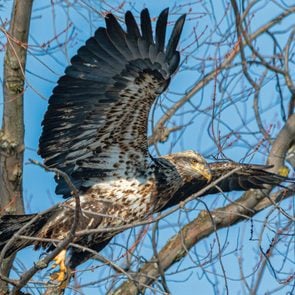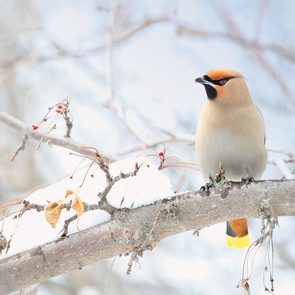How a Lost Turkey Helped Me Find My Way

I was nearing retirement when I found the wild bird in a Toronto park. This is what she taught me about resilience.
A chance meeting
I first noticed her one evening in October 2018. A shadow, she was without shape, at first. Then, I saw clearly that this was one big bird who’d come calling at my local park in downtown Toronto.
I was trepidatious, and felt compelled to find out more. Being so out of place, alone and, well, so large, she became more than a passing focus; she became an obsession. This was not a basted Butterball, this was a wild thing with considerable mojo.
Thanks to repopulation efforts in the 1980s, eastern wild turkeys can be found across southern Ontario. But, what was Rose doing in the middle of Toronto? What did she want? Some Indigenous peoples consider wild turkeys to be messengers and teachers. Turkey feathers are used in ceremonies and the bird ranks highly in its spiritual significance. What was her message to me? To us?
I was about to retire after many years as the founder and chief executive of a child welfare agency, and felt just a little lost for it. I fixated on what Rose might mean to me. Was she an old bird without purpose who chose to retire to a place without pesky coyotes and the stresses of everyday turkey life in the wild? Or, was she lost?
Maybe she had been heading somewhere, following those old pathways that wild things know but are long forgotten by us. My house sits on the bank of a buried creek that runs audibly beneath 12 feet of infill. Had she been following a primordial highway of waterways and old ravines down to the lake and beyond? I could not accept her visit was pure chance.
Rose was with us throughout the winter. She was solitary. Notwithstanding being surrounded by four kinds of squirrel and, once, a well-groomed rat, she was very much alone. I am sure my empathy for her springs from a realization of the potential isolation that can accompany our golden years.
On the more fundamental level, I wondered what she could possibly be eating in this downtown park. I bought a huge bag of peanuts, which turkeys apparently like to eat, and started feeding her. She seemed grateful, coming to me in the early morning with an eerie cluck-and-chirp combination. She didn’t walk, but sort of glided toward me.
As winter arrived, the park became encased in ice. She not only coped with the ice, but managed the incredibly cold temperatures, too. Every evening she would elevate herself into the trees. Her flight was a kind of slow motion dream sequence, threading her way through the tangle of branches to a selected limb. She would alight just right. Pure grace, a bird ballet. Once there, she would puff herself into a feathery ball, tuck her head into her wings, scrunch down covering her legs and wait out whatever the worst of winter could bring.
One popular bird
Others noticed her as well. I witnessed scores of passersby utterly enchanted by her presence. They’d curb their dogs and smile, uplifted by the moment. Everyone loved her. But nobody loved Rose more than the children from the elementary school adjacent to the park. They are the ones who named her Rose. Whenever Rose was present kids would gather, at a distance, wide-eyed and nervous. For a good many, this great bird was perhaps the only truly wild thing they had ever encountered, and they were filled with wonder and enchantment.
Some would approach too closely for her comfort. With that, Rose would face them, flare her wings, ruffle her feathers, feign flight and the kids would take off, screaming in delight. Had she chosen to really pursue them, she could reach over 40 kilometres an hour on the ground and 80 in flight. Those kids wouldn’t have a chance.
Early in my encounters with Rose, I called the City of Toronto. I wanted to know if they had some kind of turkey program, something supportive perhaps, maybe even humane removal to a safer place. They had nothing and instead recommended I call a pest control company. I was indignant. Rose was no pest and the thought of her being classed as such renewed my commitment to help her along. I believed this bird to be a gift from nature, the Creator, and if we would only listen, perhaps we could get some good advice.
Turkeys raised for food are nothing like Rose. Sadly, the commercial birds ceremoniously pardoned by the U.S. president every Thanksgiving usually die within the year. They are descendants of a Central American strain taken to Europe and returned much modified to our dinner table. Only distant cousins to Rose, they demonstrate the limits of our scientific ways.
At Thanksgiving, Rose was impossible to find. She spent Christmas disguised as a squirrel’s nest about 40 feet up. Smart girl.
She had, if she’ll pardon these words, tremendous pluck. Seeing her balled up in the tree braving the storms was inspiring, but also a bit depressing. If she was a messenger, the message wasn’t that clear. Perhaps she was there to inspire environmental stewardship. I felt it—seeing this tough beauty, not so far away from Yonge Street, walking around like she owned the place.
When spring came, Rose flew away. In a sense, I was relieved to see her go. I can picture her now with her “Tom” and a nest of chicks. While I’m not convinced she won’t be back—she loved those peanuts—I felt I did a good thing to help her along.
I wasn’t Rose’s only friend. Truly, she was no beauty with her snoop, wattle and multicoloured, wrinkly head. I think we all loved her because she gave a heartfelt message of hope to those of us who are worried about this natural world. Rose tells me we still have a chance. We are buoyed by her because she affirms the strength and resilience of nature. Thanks, Rose.
© 2019, Kenn Richard. From ‘’The Wild Turkey That Captured My Heart,’’ The Globe and Mail (July 18, 2019)
theglobeandmail.com
Next, read the strange story of the flamingo that ended up in the Ottawa River.






